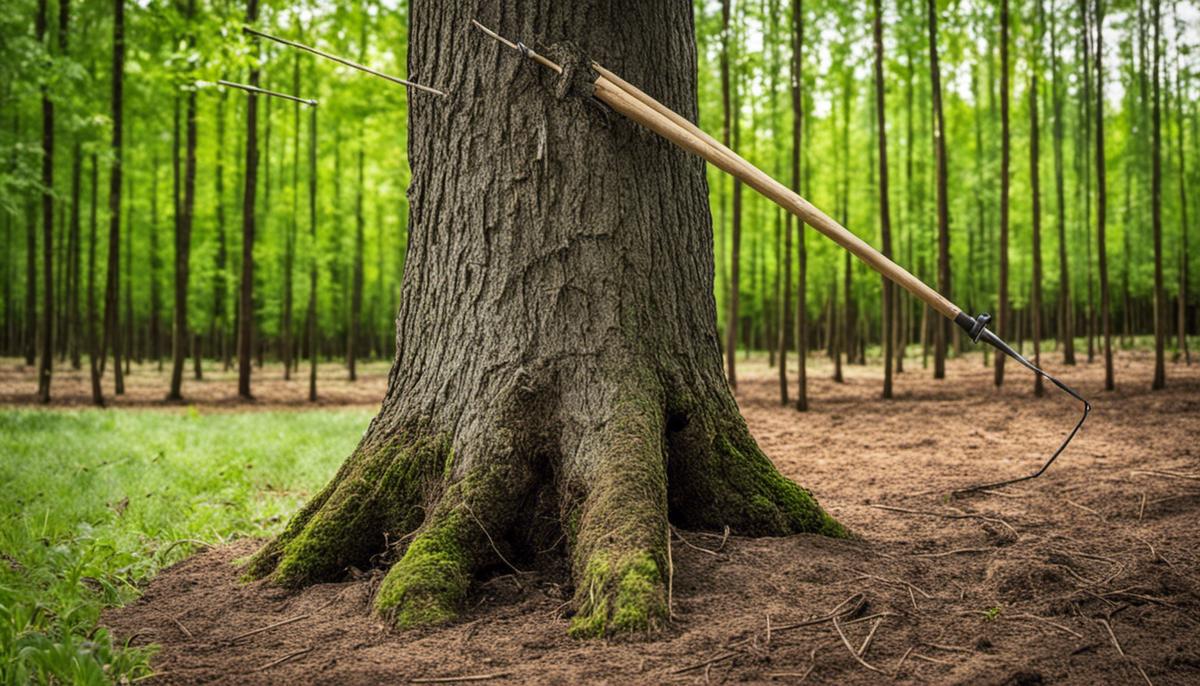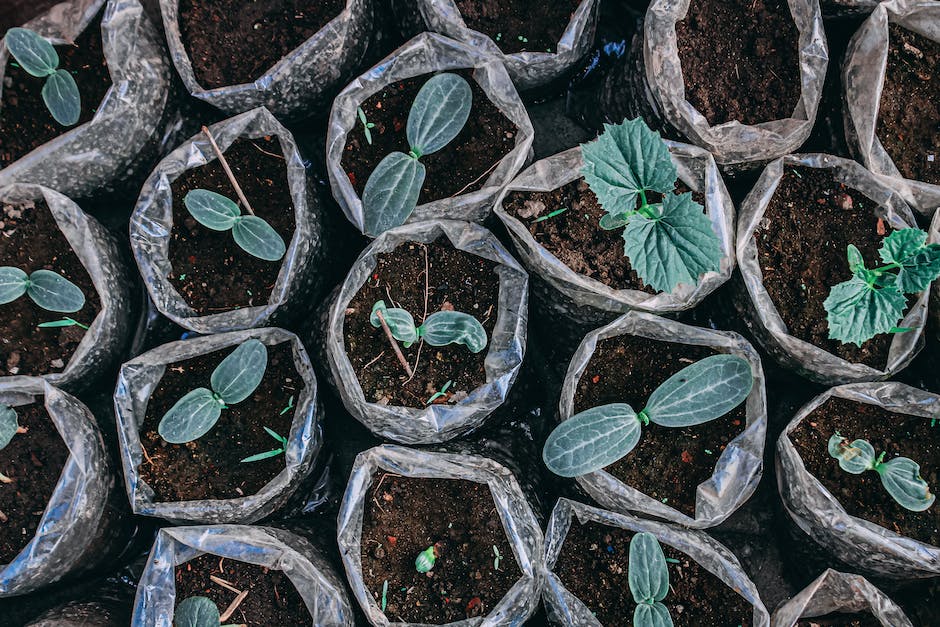Correcting Your Leaning Tree: A Staking Guide

Given the critical role trees perform in our ecosystem, their well-being is not something we can take for granted. When trees lean excessively due to reasons such as wind damage or even poor initial planting, they can pose a potential hazard and thus require intervention. This intervention often takes the form of staking – a process that provides additional stability to the tree until it can sustain its weight. Identifying when this process is needed, understanding the appropriate materials to use, and learning the correct staking techniques are integral to the health of the tree and safety of the surroundings.
Identifying the Need for Staking Trees
Staking Trees: Timing Isn’t Everything, It’s The Only Thing!
Staking trees can often be a source of confusion for many arborists, yet it’s an essential skill with timing playing an integral role. When is the ideal moment to stake your tree? Should all trees be staked? Well grab your gloves, folks, because we’re digging into the timing of tree staking like never before!
Firstly, it’s vital to recognize the fact that not all trees require staking. Often, trees are sturdy enough to establish and assert themselves without any support. In all seriousness, they’re just like people—some need a bit of extra help, while others are independent right from the get-go!
However, certain situations demand staking—environmental factors, a weak root system, or for those unusually tall, young trees that haven’t quite grasped enough strength to weather the storm (literally). Young saplings or trees that have be planted without a root ball also generally require staking to stay upright.
Ideally, a newly planted tree should be staked immediately after planting, especially if it falls under the categories mentioned earlier. The primary goal is to provide the tree with optimum stability while strengthening the root system and enhancing its growth. Using the stake as a crutch, the tree is still able to sway gently, encouraging it to stand tall and firm without dependency.
Widely recognized among skilled arborists is the ‘one year rule’; unless there are extraordinary circumstances, stakes should be removed one year after installation. Why, you ask? Well, excessive staking could result in the tree relying too heavily on the support, resulting in weakened trunks and poor root systems.
Remember: It’s always about balance. Overstake and you’ve got yourself a lazy tree that’s too comfortable with relying on support. Under stake and, well, your tree might just send out a distress signal in the next wind gust.
A quick word on technique: when tying the stake and the tree, avoid tying it too tightly. The tree needs room to grow and move in the wind, so ensure the tie can slide as needed. Preferably use a flexible material, ensuring that the work you’re putting into this staking gig isn’t going pear-shaped.
A handy rule of thumb is to allow for approximately an inch of loose material for every inch of the tree’s diameter at chest height. So get your measuring tapes out, fellow tree lovers, because precision is the name of the game!
While staking seems like a small aspect of tree care, it could be the difference between a struggling sapling and a thriving tree. The timing and technique must be perfect to ensure the tree grows strong and stays healthy. So, next time you’re considering planting that sapling, chalk out a staking strategy, remembering that in the game of stakes, timing, indeed, is everything.
So fellow tree enthusiasts, stake those trees wisely and watch them grow from frail saplings to mighty powerhouses!

Selection of Materials
Heading into the nitty gritty of tree staking, a question that’s often marrow-deep in every gardener’s mind is: what kind of stakes and ties are best for supporting a tree?
With the wide array of options available, zeroing in on the best stake and tie combination can be like looking for a needle in a haystack. Ideally, you want those that offer optimum support without impeding growth or damaging the tree.
For stakes, a variety of materials can be used – wood, metal, or even plastic. However, the most common choice is wood given its durability and the ease with which you can drive it into the ground. Remember, the stake should be sturdy and strong enough to withstand the elements and afford the tree the support it needs.
For smaller trees or those planted in sheltered areas, a single wooden stake, about 1.2m high and 25-40mm in diameter, should suffice. Think something along the lines of a broom handle. For larger trees or ones planted in exposed locations, you might need to deploy two or more stakes. Metal stakes, roughly 2m long, are preferable in these instances because of their increased strength.
Choosing the right ties is equally important as they connect the tree with the stake and provide critical support. One thing you don’t want to compromise on is flexibility. The best ties wrap snugly around the tree and stake but are also flexible enough to allow the tree some movement. This encourages the tree to grow stronger and more resilient.
Soft, broad plastic or fabric ties are recommended as these materials prevent damage to the tree bark. For larger trees, you might opt for adjustable buckle tree ties, which can be altered as needed to accommodate the tree’s growth. Some enthusiasts also swear by rubber locking ties, touting their balance of flexibility and strength.
When attaching the ties, remember to position them about a third of the way up from the tree base. This gives the best balance of support and flexibility. The ties should be secured to the stake first, and then loosely fastened around the tree, allowing for a little wiggle-room.
The correct stake and tie can make a world of difference in supporting your trees, helping them grow tall and strong. Understanding which options are best and knowing how to use them effectively is vital. When done properly, tree staking is more than just a simple gardening task; it’s a labor of love that yields fruitful results for years to come. Remember, each tree is unique, and its staking approach should be tailored accordingly. Carry these insights with you into the garden and watch your trees flourish.

Staking Techniques
Correctly Staking a Leaning Tree: A Comprehensive Guide
There’s an art to staking a tree, particularly if it’s leaning. Ensuring its proper growth involves a lot of considerations from your end. But don’t worry, with time and patience, anybody can master this task. So here are the next steps to take once you’ve got your basic staking set-up done.
To start with, it is best to position stakes in the ground about two feet away from the trunk of the tree. This is the optimal position for maximum support and growth. And instead of dispatching all stakes in a straight line, form a triangle around the tree if you are using three stakes. Even distribution of support will help to rectify tree’s leaning position much more effectively.
Equally important is the angle at which you insert the stakes into the ground. An approximate 45-degree angle, leaning away from the tree, has been proven to provide top-notch support and sturdiness for staked trees. This along with the placement around the tree, ensures that it receives an evenly balanced support.
Now that your stakes are planted, it’s time to attach the ties. While doing so, aim to fasten the tie to the stake at a height equal to two-thirds of the tree’s height. This strategic fastening height allows for the maximum support to the tree without impeding its natural flexibility.
When attaching the tie to the tree, it’s important to follow a technique called the ‘figure-eight configuration’. Essentially, this is lacing the tie in such a way that it forms a figure ‘8’ between the tree and the stake. This type of configuration minimizes any friction and bark damage caused by the tie rubbing against the tree. Remember, though, the tie should be snug but not too tight – there should be some wiggle room for the tree to naturally sway and move.
And last but not least, regular monitoring and adjusting of the stakes and ties is essential. Check your staked tree frequently, especially after strong winds or heavy storms. This is to ensure that the ties aren’t too tight which may stress the tree and inhibit its growth.
Staking a tree is a labor of love. It’s a proper practice of patience and attention to detail. Amazingly enough, these efforts never go unrewarded. With this proper staking technique, expect to see your leaning tree gradually straighten up and start growing towards the skies the way it was meant to. Thank you for caring about trees. Now, go out there and use these skills to make them as strong and beautiful as possible!

Proper staking of a leaning tree using the right materials and methods ensures its prosperous growth while preserving the safety of the environment. Remember that each tree is unique in its needs and that staking should only be employed when necessary. It serves merely as a temporary support until the tree is capable of standing independently. Therefore, knowing when to remove the stakes is as important as knowing how to stake the tree. Arm yourself with the knowledge of the correct staking techniques and support the well-being of your trees, contributing to a healthier ecosystem overall.



